The Short Version
- Developers nationwide are transforming prime real estate into massive mixed-use destinations designed for staying, not just passing through.
- Vornado’s multibillion-dollar Penn District redevelopment reimagines the blocks around Midtown Manhattan’s Penn Station.
- Suburban megaprojects like Vestar’s Legacy Park in Mesa, Arizona, signal growing demand for walkable, live-work-play environments outside city cores.
- Placemaking has become the new anchor, with residential and public-space programming driving long-term vibrancy and community connection.
At Manhattan’s Penn District and Beyond, Developers Are Reimagining Prime Locations as True Destinations
Location is the cornerstone of any major real estate decision, but for the largest of projects, success lies in turning good locations into great destinations.
Vornado Realty Trust’s Penn District, for example, doesn’t need to rely on the tenet that “if you build it, they will come.” The prime location, near the intersection of 34th Street and Seventh Avenue in Manhattan, already is one of the busiest pedestrian areas in the county. Penn Station alone welcomed 600,000 people a day, then-CEO of Amtrak Stephen Gardner said in 2023. Madison Square Garden, marketed as The World’s Most Famous Arena, also draws a healthy number of visitors.
ALSO CHECK OUT: Building Success: What It Takes To Deliver Mega Mixed-Use Projects, Featuring East Bank, Fan Pier, Harborplace and OCVibe
Rather, the issue is that these crowds were passing through the neighborhood to destinations elsewhere.
About 10 years ago, Vornado began developing a master plan for the area, framing Penn Station as the “front door” to New York City. “One of the things that we had to do is convince people if you build it, they’ll stay,” said Vornado executive vice president and head of retail leasing Edward Hogan.
Penn District
Location: New York City between 31st and 34th streets and Sixth and Ninth avenues
Developer: Vornado Realty Trust
Details: Penn District is a multiphase redevelopment transforming the area around Penn Station in Midtown Manhattan into a vibrant mixed-use neighborhood. Since 2015, the project has attracted $5.7 billion in public and private investment and delivered more than 5 million square feet of office space within the redeveloped Penn 1 and Penn 2 towers, which top Penn Station, and the Farley Post Office Building, which also now houses Amtrak’s Moynihan Train Hall. The district features 1 million square feet of retail and 300,000 square feet of landscaped plazas and sidewalks, anchored by two major transit hubs — Moynihan Train Hall and Penn Station — with the potential to expand to 15 million square feet via other Vornado-owned and controlled development sites.
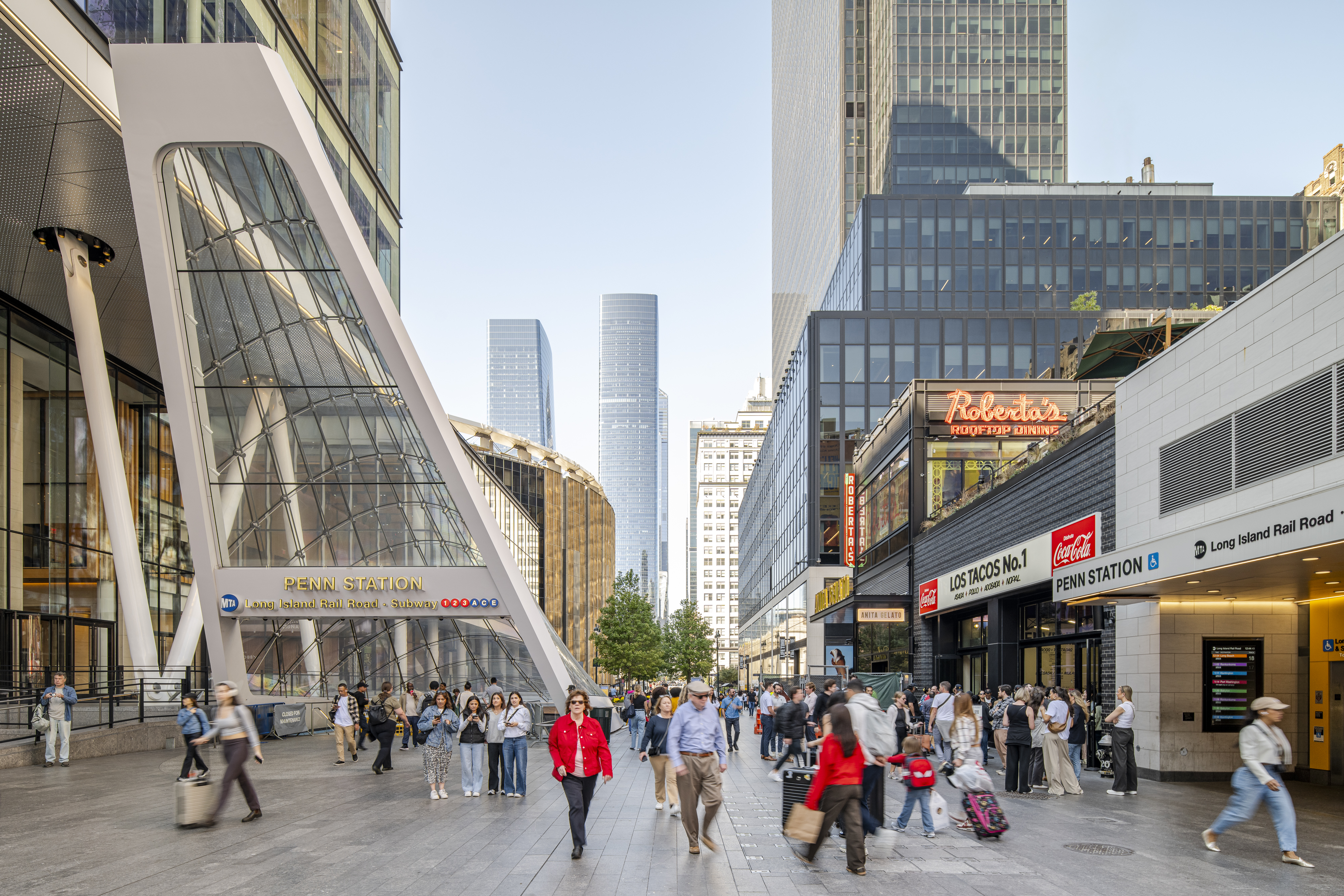
Plaza 33 on the north side of Penn Station and Madison Square Garden looking east Photo courtesy of Vornado Realty Trust
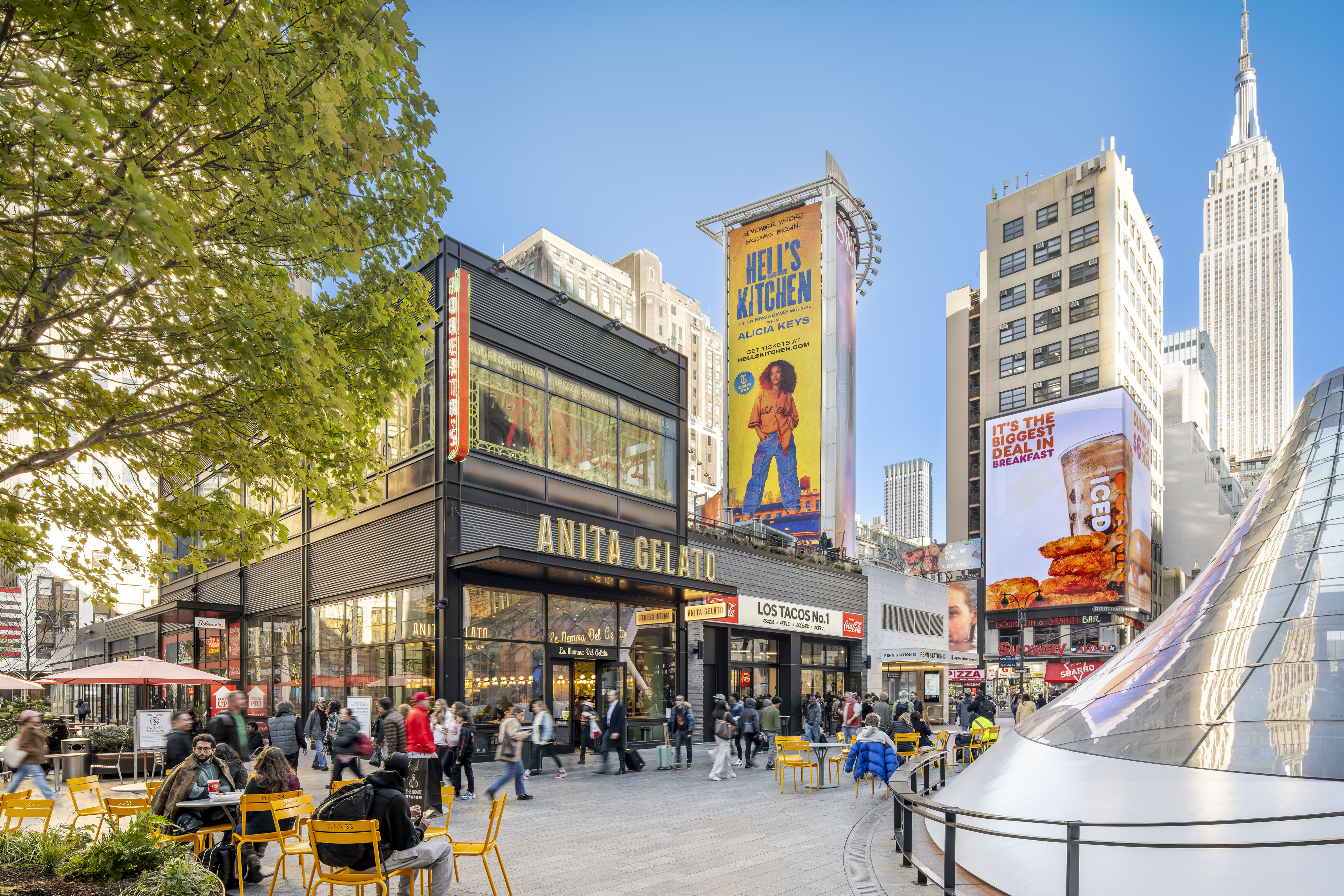
Plaza 33 on the north side of Penn Station and Madison Square Garden looking west Photo courtesy of Vornado Realty Trust
As part of that master plan, Vornado built Plaza 33, a large public plaza with trees and plants. Restaurants with outdoor seating line the space, and second-story restaurants overlook it. “A lot of what we’re doing is creating places where people can come together and meet and socialize, and we’ve also brought in tenants that people love,” said Hogan.
Total private and public investment in the redevelopment of the blocks surrounding New York City’s Penn Station has reached $5.7 billion over the past decade, including 1 million square feet of retail space, two new train halls and 300,000 square feet of landscaped plazas and sidewalks.
From City Centers to Suburbs: Megaprojects Expand Their Reach
Megaprojects once focused on dense, urban areas, as Penn District has, but now they’re popping up in the suburbs, too. People who live and work in suburban areas are looking for some of the same features typically found in city centers: pedestrian-oriented experiences with walkable hubs of live, work and play options. “People want a different experience than your typical shopping center,” said Vestar president and CEO David Larcher. “It’s not just a place to shop or to eat.”
Along with growing demand for large mixed-use projects in the suburbs, developers often find fewer barriers to entry there, including greenfield sites, where building is easier and often less expensive. Vestar recently announced plans for Legacy Park, a multibillion-dollar mixed-use project on 200 acres in Mesa, Arizona. The site — formerly part of a General Motors Proving Ground vehicle testing site that closed in 2009 — not only was a relatively “blank slate” but also had surrounding infrastructure already in place.
Legacy Park
Location: Mesa, Arizona
Developer: Vestar
Details: Vestar and landowner Pacific Proving LLC expect to break ground on the 200-acre, multibillion-dollar mixed-use Legacy Park project in southeast Mesa in 2027. At full buildout, the development will feature 300,000 square feet of upscale retail and chef-driven, sit-down restaurants; 2,500 contemporary multifamily residences; and a 600-key resort hotel developed by The Athens Group. Plans also call for 3.4 million square feet of midrise office and corporate-campus space, along with a lush urban park spanning more than 20 acres and anchored by a large lake that will serve as a regional gathering place for recreation, events and community connection.
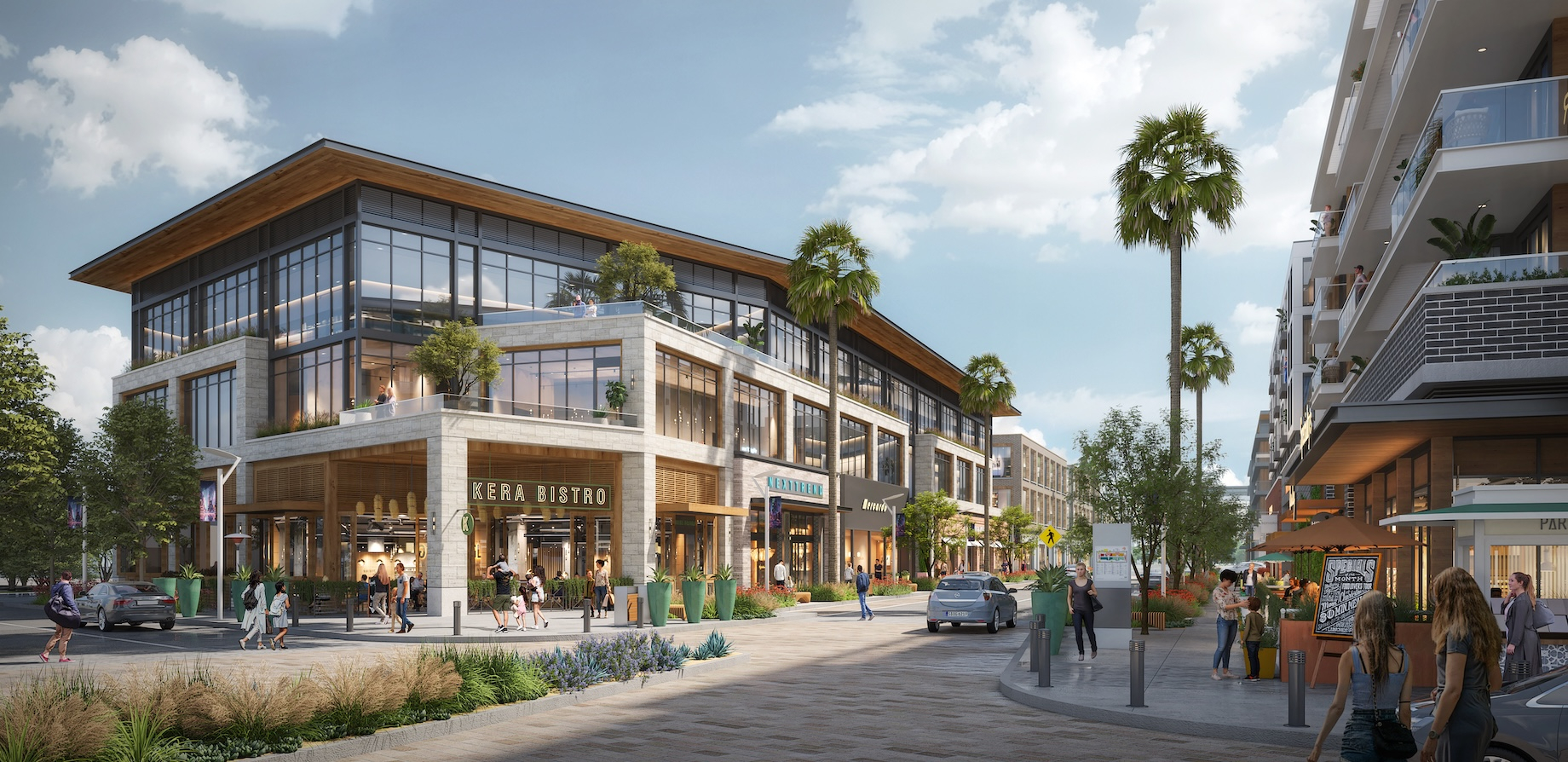
Image by MVE + Partners and courtesy of Vestar
Construction on Legacy Park is expected to start in 2027 and likely will take 20 years. When complete, the project will feature a 600-key resort hotel, 2,500 multifamily units, 3.4 million square feet of office and 300,000 square feet of upscale retail and restaurants. Vestar is partnering with the landowner, Pacific Proving LLC, which also plans a long involvement through buildout. “In our view, it takes that kind of ownership structure and approach for these projects to be successful,” said Larcher.
However, the “build it and they will come” approach is a tough sell even in the suburbs. Locations that work the best for megaprojects are situated in dynamic areas that already have traffic generators, such as strong housing, demographics and job growth. For example, Legacy Park is directly across the street from the Arizona Athletic Grounds, a regional sports complex that brings more than 5 million visitors a year. Other Legacy Park neighbors are Arizona State University and the campus’s nearly 10,000 students and Mesa Gateway Airport. In addition, Google, Apple and Meta all have corporate facilities in the vicinity.
FROM THE C+CT ARCHIVE: 3 Sports Complexes That Will Rise Alongside Retail and F&B
Finding — and Entitling — the Land To Build Big
One of the many hurdles to developing megaprojects is finding, assembling and entitling parcels that can support the density. HYM acquired the former Suffolk Downs horse racing track in 2017 and is transforming it into a mixed-use neighborhood that straddles East Boston and the neighboring city of Revere.
It’s rare to find such a large development site close-in to a major metro, but Suffolk Downs also is already served by two Massachusetts Bay Transportation Authority stations that connect to downtown Boston in about 10 minutes. As part of its master plan, the development is fully entitled for 16.2 million square feet that will include about 10,000 housing units, 5 million square feet of commercial or life sciences space, three hotels and about 450,000 square feet of retail. Developers expect to dedicate a quarter of the site to open space.
Suffolk Downs
Location: East Boston and Revere, Massachusetts
Developer: HYM
Details: This redevelopment of the former Suffolk Downs horse racing track will transform 161 acres into a mixed-use neighborhood served by two stops on the Massachusetts Bay Transportation Authority’s Blue Line. Suffolk Downs is entitled for 16.2 million square feet, including 10,000 apartment and condo units, 5 million square feet of commercial or life sciences space, three hotels and about 450,000 square feet of retail. Developers also expect to dedicate about one-fourth of the site to open space.
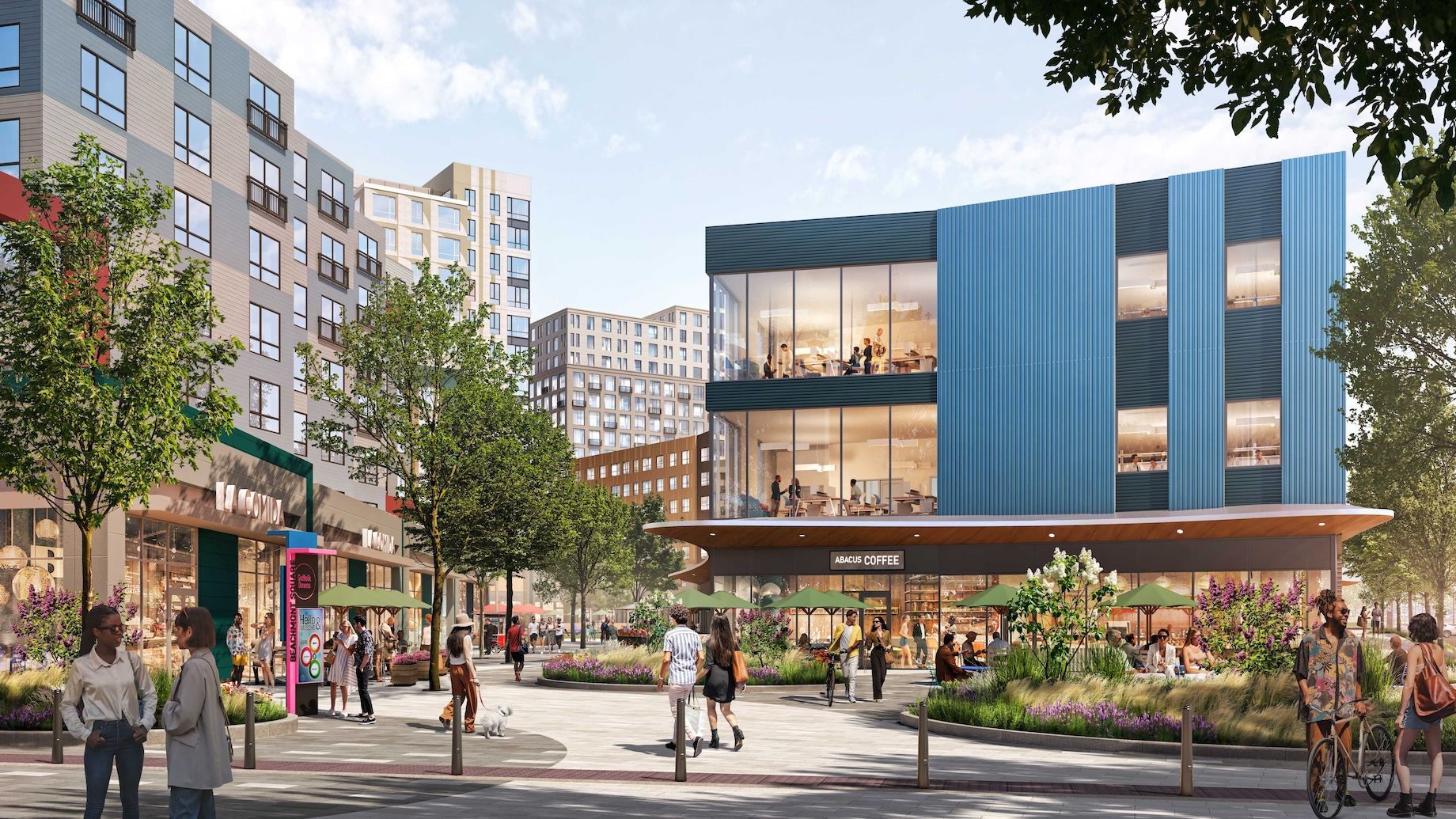
Suffolk Downs Image courtesy of HYM
Suffolk Downs is likely a 15-year project. Phase 1 includes three residential buildings, a hotel and significant investment in new infrastructure. HYM completed the first residential building, the 475-unit Amaya, in 2024, and the building is nearly full.
Although multiphase projects are never easy, HYM is drawing on past experience, which includes Cambridge Crossing, a 58-acre redevelopment of a rail yard. “The macro[economic] environment is not great right now, but we’ve been here before,” said HYM managing partner and CEO Thomas O’Brien. “The key is to be smart, creative and resilient.” He added that good partnerships with elected officials, community groups and community leaders are also important.
Placemaking as the New Anchor
Megaprojects also now embody walkable, connected destinations that create community. “Placemaking is different than what it used to be, and in many ways, placemaking is the new anchor,” said Dallas Branch, a principal in the Dallas office of global design firm Perkins Eastman. Decades ago, the traditional anchor for a mixed-use development was a department store. That’s no longer the case, and the new anchor might even be a park or large public space. “The most successful projects that we’re seeing have wellness-oriented programming for these amenity districts,” noted Branch.
Residential also has become more of an anchor for such projects. “You need that critical mass of people to make all of these other components work, and that’s where residential has really stepped in,” he said. Both planned residential growth and demand for it are fueling megaprojects and master-planned communities across the Sun Belt, notably in Texas and Arizona. In Tempe, Arizona, for example, Cantor Fitzgerald and Silverstein Properties are developing South Pier, a $1.8 billion master-planned community that broke ground in 2023. And the 2,500-acre Fields in North Texas is expected to deliver more than 13,000 single-family and multifamily units as part of its Fields West luxury urban village.
Still, for all the planning, needs are certain to evolve while megaprojects are playing out. Thus, developers are considering mixed-use components that are more adaptable, such as office or lab space that can be converted to residential. Branch explained: “That’s really important because things are constantly changing in this environment we live in today.”
Fields West
Location: Frisco, Texas
Developer: The Karahan Cos. president and CEO Fehmi Karahan
Details: The 55-acre Fields West luxury urban village is part of the master-planned Fields community. Fields West will combine office and upscale residential with a 350,000-square-foot shopping, dining, entertainment component that will feature boutique retailers and national brands, including the first Texas location for Bloomie’s. Other retailers that have committed include Alo, Arhaus, Kendra Scott, Pottery Barn, Sephora and Williams Sonoma. Karahan expects to deliver the first commercial spaces in Fields West in 2027.
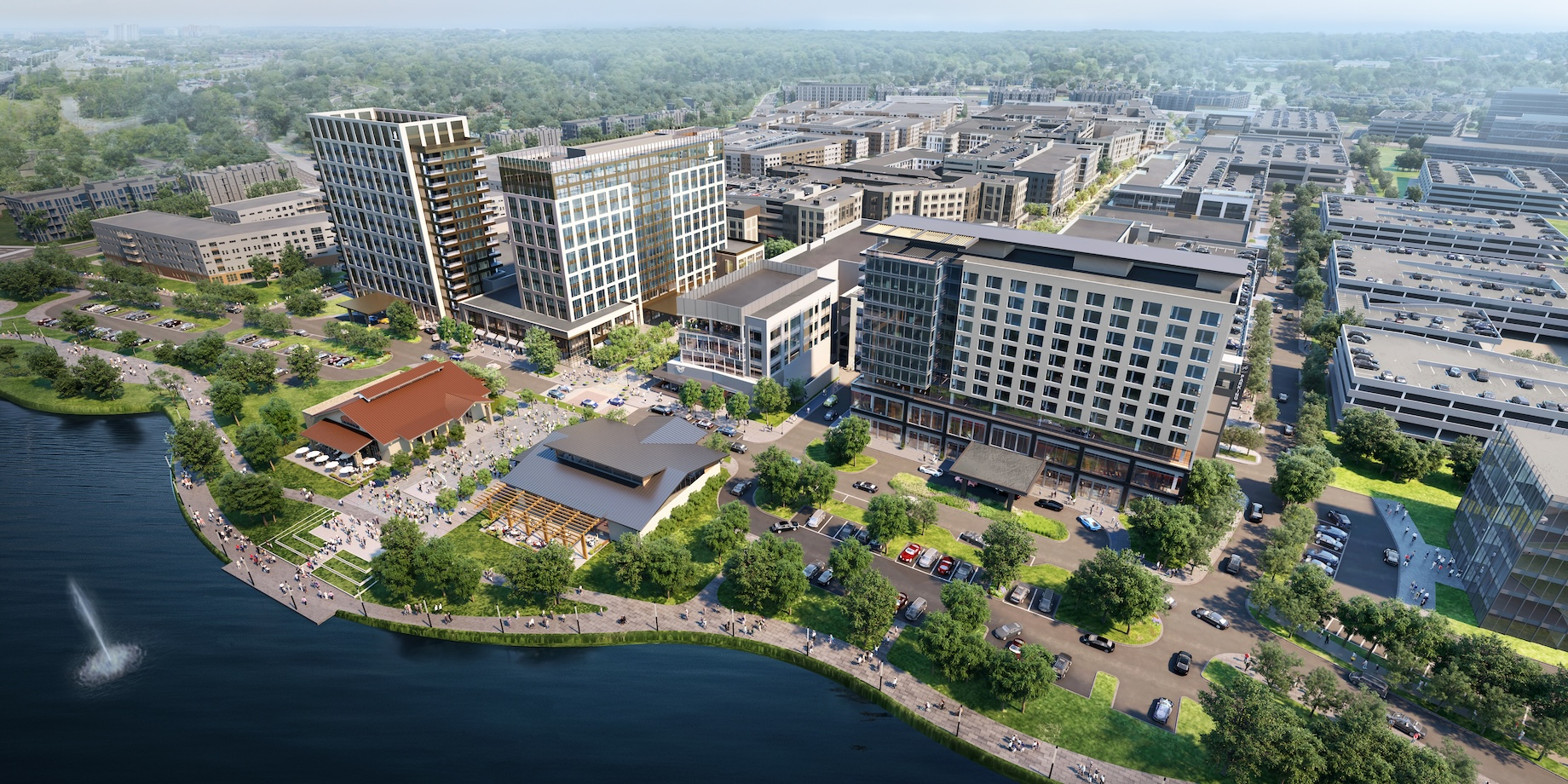
Fields West, also rendered at top Images above and at top courtesy of The Karahan Cos.
By Beth Mattson-Teig
Contributor, Commerce + Communities Today